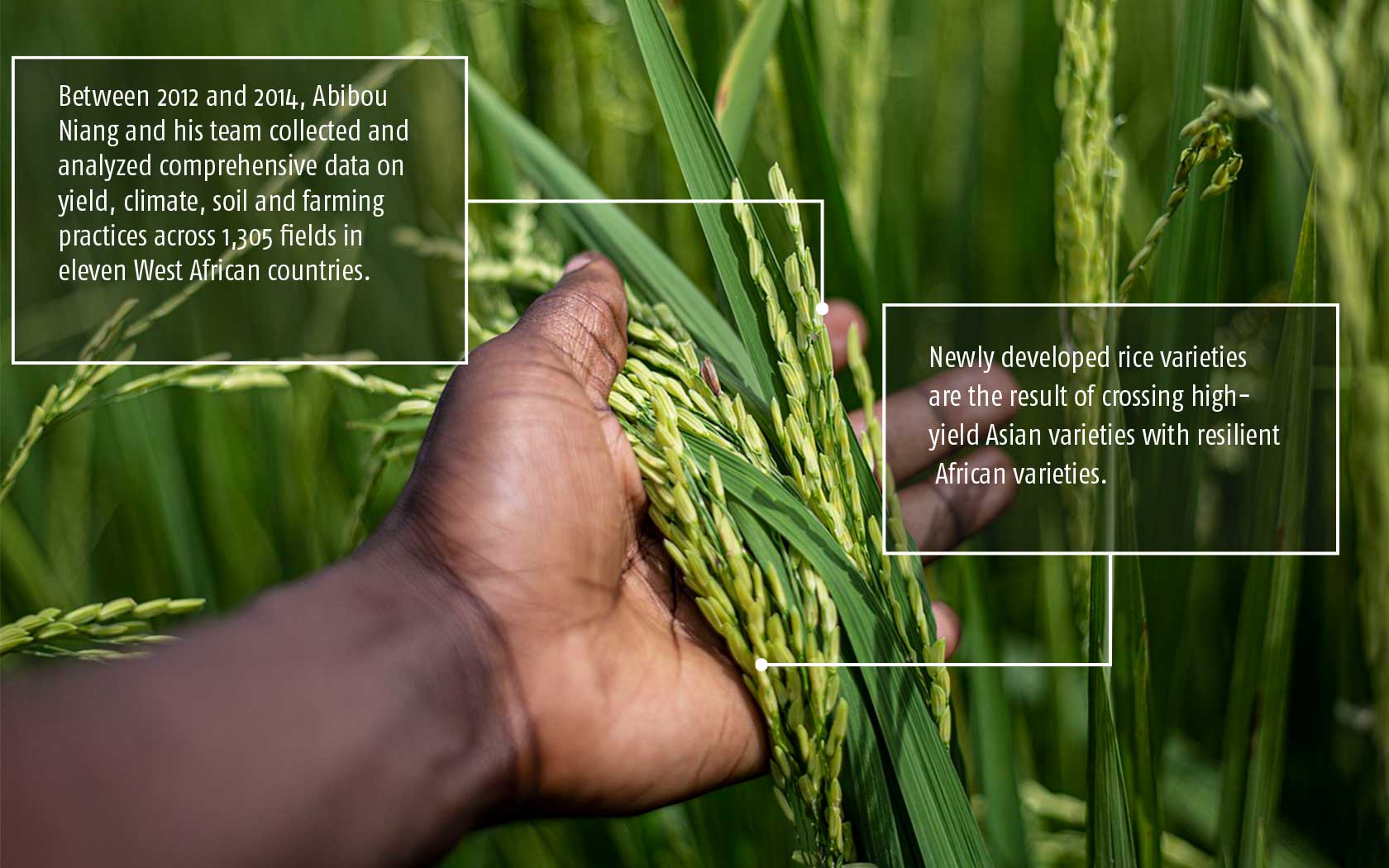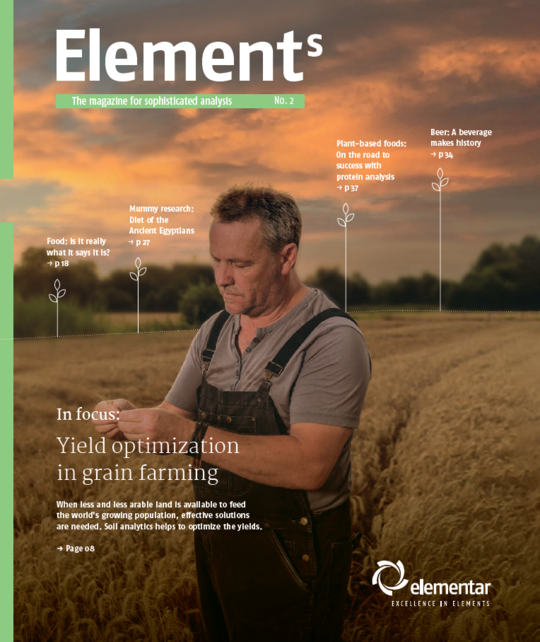How to significantly increase rice yields?

In the previous article of this series, Yield optimization with the help of soil analysis, we focused on how Professor Honermeier and his students from Justus Liebig University Giessen were conducting research into all aspects of grains, focusing on examples from corn, wheat and barley.
In Asia and Africa, rice is one of the main staple foods. Abibou Niang was investigating the yield gaps in rice cultivation in West Africa as part of the research for his doctoral thesis at the agricultural faculty of the Rhenish Friedrich Wilhelm University Bonn. His goal was to discover ways to increase crop yields. Faced with challenges like climate change and threats from pests and diseases, cultivation also needs to be made more resource-efficient and sustainable.

The research project
Although rice is a staple food in West Africa, agricultural production cannot meet demand. The farmers’ yields are low and, depending on the climate zone, subject to major fluctuations. Abibou Niang wanted to find out how to stabilize these fluctuations. As part of a large research team he examined the variability of yields in the three main rice farming systems in West Africa. He considered this variability in relation to the practices of farmers to determine the associated influencing factors. Each of these steps was carried out in close collaboration with the participating national agricultural research institutes in each country. Between 2012 and 2014, they compiled and analyzed comprehensive data on yield, climate, soil and farming practices in 1,305 fields in eleven West African countries.
This project saw the use of the vario MAX (the vario MAX cube is the successor instrument), one of our instruments that can determine the content of the important soil parameters carbon and nitrogen in the shortest possible time. “The analyzer provides analytical results without using any hazardous chemicals. The rapid availability of the results allowed us to directly access important data to evaluate the potential fertility of the soils and we were able to use it straight away to analyze cropping scenarios,” explains Abibou Niang.

Possibilities to increase rice yields
Some results revealed differences of 27 to 51 percent between existing and potential crop yields. In irrigated systems, this was due to weeds, nitrogen fertilizer application and cultivation methods, whereas, in rain-fed systems, it was down to the rice variety, the hydrology of the field and weed infestation at maturity. All these results indicate that there is great potential to increase rice yields in this region – provided that farmers recognize and eliminate the relevant obstacles.
In addition to analyzing the soil, the focus here was also on the properties of the rice plant itself. And as to how it can be further developed and modified to ensure high-yield cultivation, even under adverse conditions. Of relevance here, for example, are newly developed rice varieties, which are the result of crossing highyield Asian varieties with resilient African varieties. All these research results and measures give cause for hope that new ways can be found to manage the world’s remaining arable land sustainably and profitably based on precise analyses and the farming methods derived from them.
To be continued...
In the upcoming last acticle of this series, we will have an interview with Professor Bernd Honermeier, former Head of the Department of Crop Production at Justus Liebig University Giessen from 1998 to 2020. Based on his experience, we will take a look at other methods, that make higher yields possible. If you don't want to miss this article, then register for our newsletter to be informed when the next article of this series will be published.
UPDATE: The next article in this series is now available here.
You don't want to wait for the next article? Download our latest Elements magazine to read the whole article series now.

DOWNLOAD YOUR COPY
Fill in the form to receive your download link per e-mail.
Your contractual consideration for the free provision of the download is the subscription to our personalized newsletter. By clicking on the “download now” button, you therefore declare your acceptance of the receipt of personalized newsletters by e-mail by Elementar Americas, Inc. and its group companies as well as the evaluation of your user behavior in this regard and - if available - the merging of this data with your data in our customer database.
In order to receive newsletters from our group companies it is necessary to transfer your above-mentioned personal data to these companies. The data transfer is contractually required.
You are aware that the subscription to our personalized newsletter represents the contractual consideration that you provide for the free provision of the download. You can unsubscribe from the newsletter at any time with effect for the future. You can object to the future use of your data for advertising purposes at any time. For further information, please refer to our privacy policy.
Do not miss any new articles
NEWSLETTER
We will constantly publish new blog articles. Register for our newsletter to stay up-to-date and get informed about latest blog articles, news and trends.



